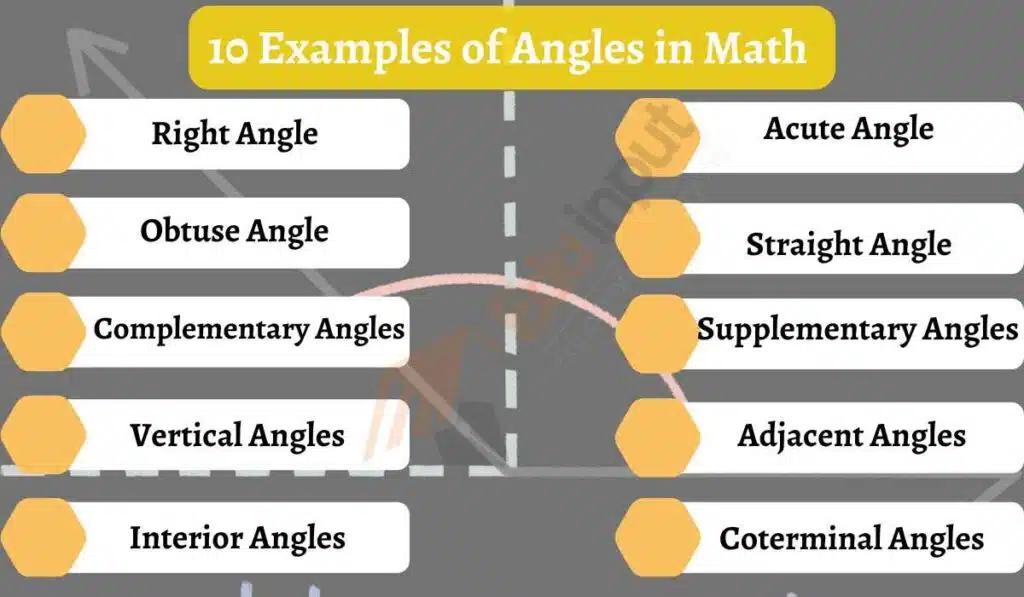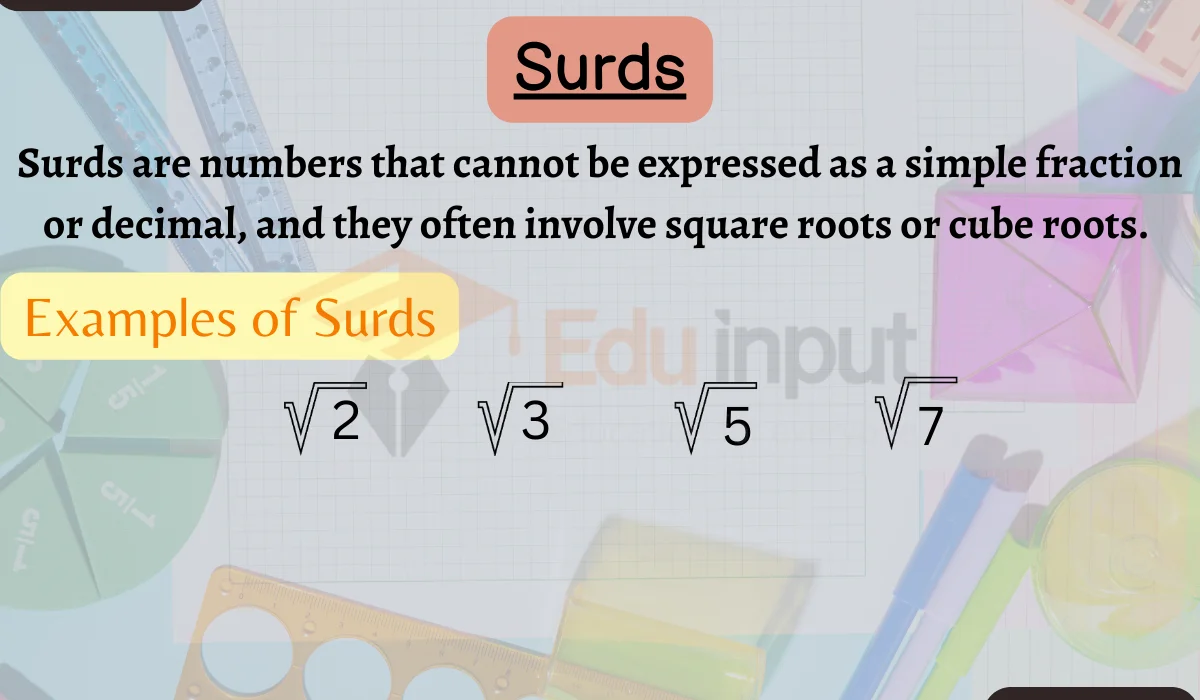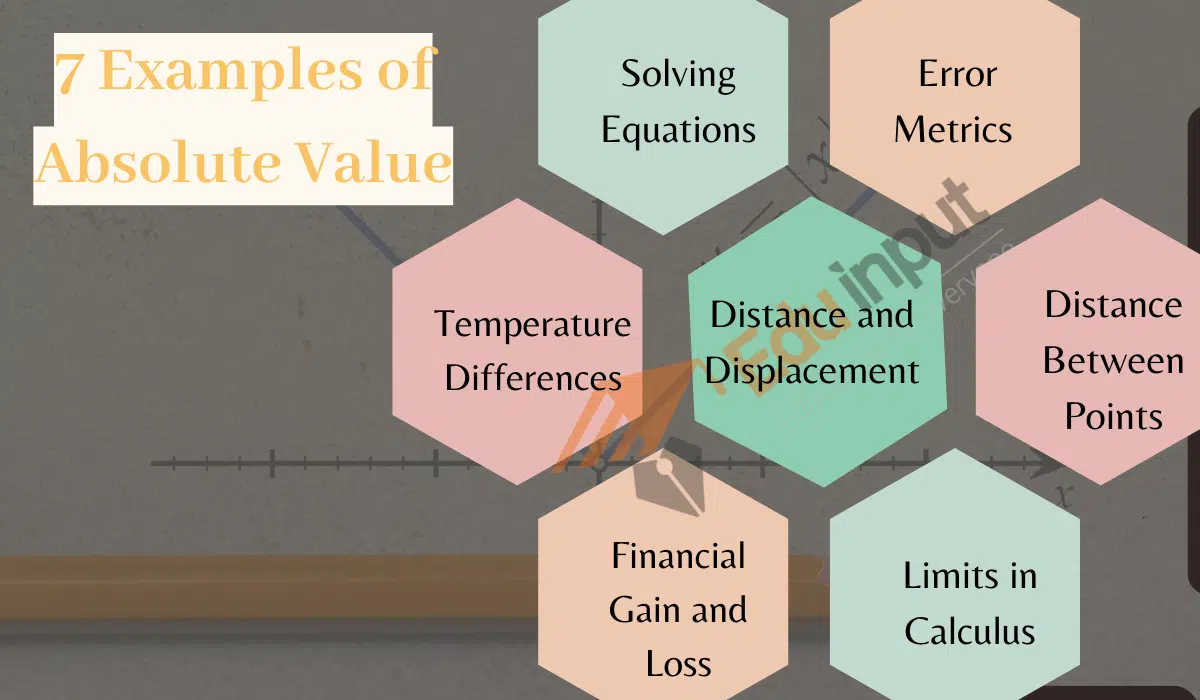10 Examples of Angles in Math
Angles are a fundamental concept in geometry and trigonometry.
An angle is formed when two rays share a common endpoint. The rays are the sides of the angle, and the shared endpoint is the vertex.
Angles are classified by their measure, which is the amount of rotation between the two rays.
In this article, we will explore 10 Examples of Angles in Math, breaking down complex concepts into easy-to-understand explanations.

Examples of Angles
1: Right Angle (90 degrees)
A right angle is exactly 90 degrees, forming an L-shape. It’s often seen in the corners of squares, rectangles, and the hands of a clock at 3:00.
2: Acute Angle (Less than 90 degrees)
An acute angle is smaller than a right angle. Think of it as a sharp angle. When you open a book slightly, the angle between the covers is an acute angle.
3: Obtuse Angle (More than 90 degrees)
An obtuse angle is greater than a right angle but less than a straight angle (180 degrees). Imagine a door slightly ajar; the angle formed is obtuse.
4: Straight Angle (180 degrees)
A straight angle is a perfectly straight line, equivalent to half of a full circle. It’s like a flat line on paper, dividing it into two equal halves.
5: Complementary Angles
When two angles add up to 90 degrees, they are complementary. For example, 30 degrees and 60 degrees are complementary angles.
6: Supplementary Angles
Supplementary angles combine to form a straight line, totaling 180 degrees. For example, 120 degrees and 60 degrees are supplementary angles.
7: Vertical Angles
Vertical angles are formed when two lines intersect, creating four congruent (equal) angles. They share a common vertex but no common sides.
8: Adjacent Angles
Adjacent angles are side by side, sharing a common vertex and a common side. They don’t overlap. In a rectangle, the angles at a corner are adjacent.
9: Alternate Interior Angles
When two parallel lines are intersected by a transversal line, the angles on opposite sides of the transversal and inside the parallel lines are alternate interior angles. They are equal.
10: Coterminal Angles
Coterminal angles are angles that share the same initial and terminal sides but differ by 360 degrees or multiples thereof. For example, 30 degrees and 390 degrees are coterminal angles.
Angles are everywhere, whether we’re building stuff, reading the time, or opening a book. Knowing these basic angle ideas can make us better at solving problems and dealing with math. By learning about these ten types of angles in math, you have gotten better at geometry.
FAQs
What is the sum of angles in a triangle?
In any triangle, the sum of its angles always equals 180 degrees.
Can you have an angle greater than 360 degrees?
No, angles are typically measured in a 360-degree circle. Anything larger is considered a multiple of 360 degrees.
What is the significance of a right angle in geometry?
A right angle is a fundamental concept in geometry and is often used as a reference point in various calculations and constructions.







Leave a Reply